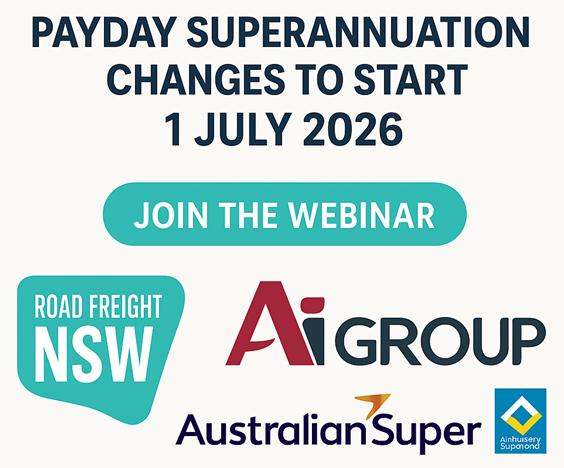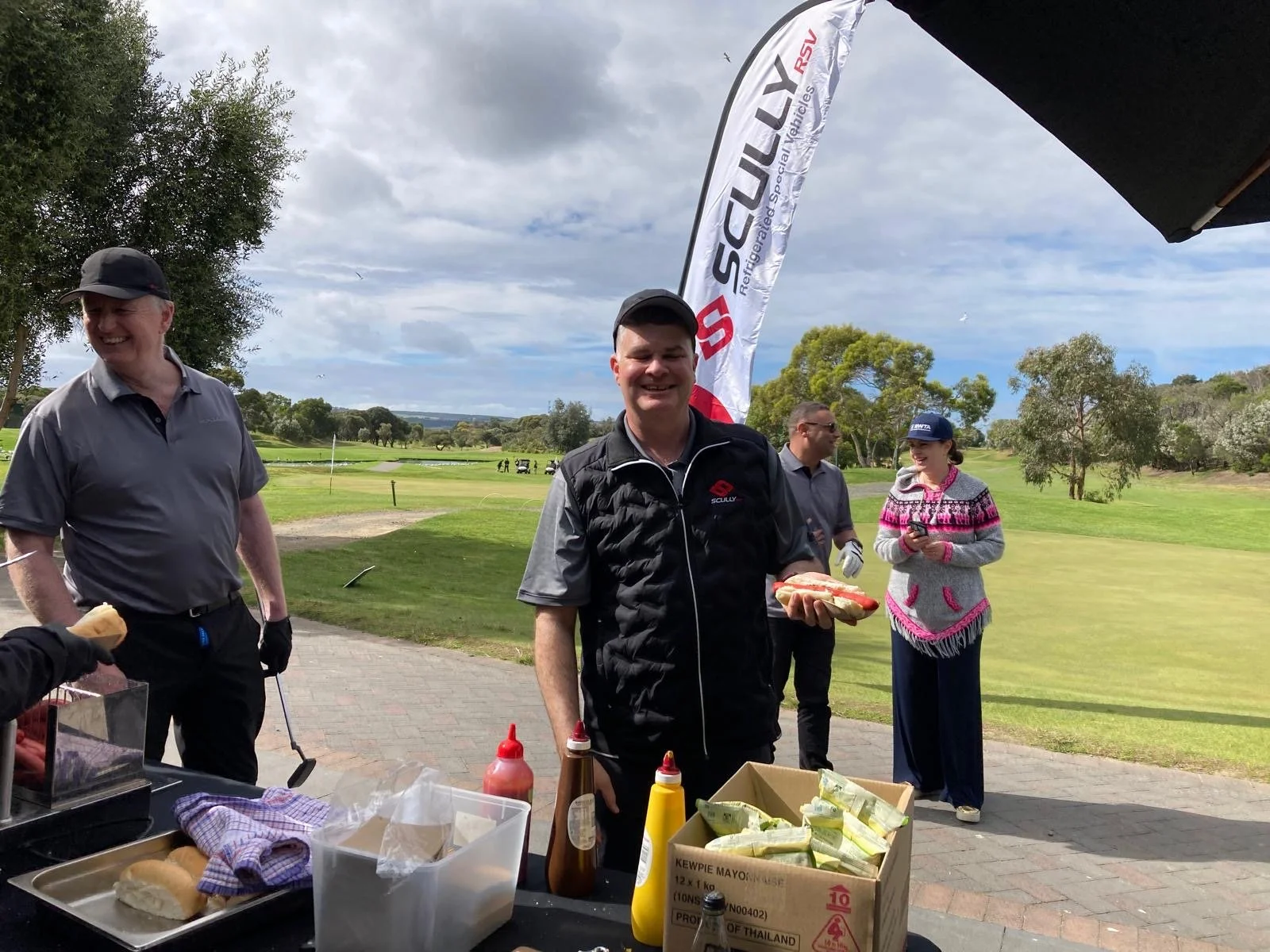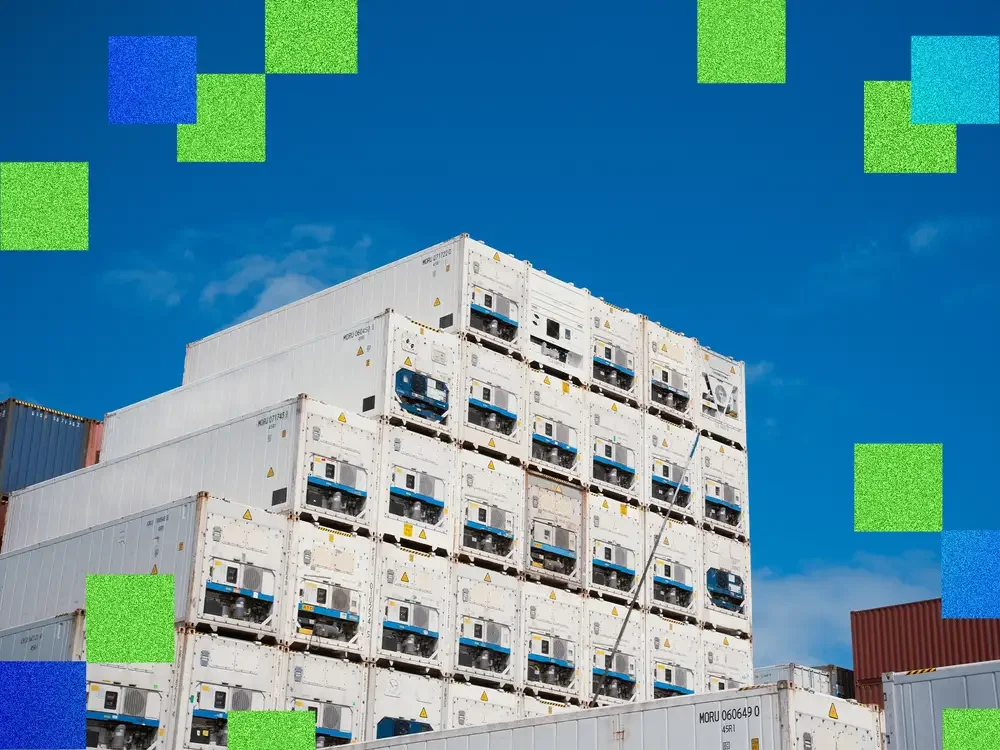Extraordinary efficiency for new Melbourne cold storage facility
Building a giant cold store in Melbourne is a challenge, especially with potentially huge variations in ambient temperatures experienced during the Melbourne cool winters and hot summers, sometimes exceeding 40°C.
Building a giant cold store in Melbourne is a challenge, especially with potentially huge variations in ambient temperatures experienced during the Melbourne cool winters and hot summers, sometimes exceeding 40°C.
Under these conditions, it is essential for compressor systems, that can be responsible for up to 80% of the total plant power consumption, to be flexible and efficient.
Fortunately, the GEA Grasso V1800 reciprocating compressors are designed for just such a job.
The new Premier Melbourne Cold Storage facility, just 10 km from the city centre, provides 22,141 m2 of cold storage space including both frozen (-25°C) and chilled (+2°C) areas and a huge, 200m-long staging area for temporary storage under optimal conditions. Together they offer 230,000m3 of cold storage capacity. The GEA Grasso V1800, 10-cylinder reciprocating compressors at the heart of the plant, have excellent part-load performance and a wide Variable Frequency Drive (VFD) range for outstanding energy efficiency with minimal oil carry over ensuring evaporator performance is and remains at a premium.
Using ammonia (NH3) in a centralized, low charge refrigerating plant delivers PFAS-free, zero ODP, and zero GWP refrigeration performance with a predicted Specific Energy Consumption (SEC) of only 8-9 kWh·m-3·year-1, compared to typical averages of 20-40 kWh·m⁻³·year⁻¹- resulting in annual energy costs that are more than 50% lower than conventional cold stores.
Capital and operational costs have been reduced thanks to optimized infrastructure and extended service intervals, based on real-time compressor monitoring.
These improvements contribute to a lower total cost of ownership, while maintaining high levels of efficiency and reliability.
Once again, the Scantec Refrigeration Technologies team, together with GEA, has combined its expertise with leading engineering to deliver outstanding results.
How AGVs Are Reshaping Australia’s Refrigerated Warehouses
Tony Raggio, Dematic ANZ's Sales Manager AGVs talks about the new range, the benefits realised by Cold Storage facilities with AGVs, including reduced reliance on labour, increase operational visibility and control, improved safety and reduced product damage.
Dematic has implemented a number of Automated Guided systems (AGVs) in Cold Storage facilities in ANZ, and has just released a new range of models specifically aimed at brownfield sites.
Tony Raggio, Dematic ANZ's Sales Manager AGVs talks about the new range, the benefits realised by Cold Storage facilities with AGVs, including reduced reliance on labour, increase operational visibility and control, improved safety and reduced product damage. A critical question for those considering implementing AGVs, Tony also talks about integrating Dematic's AGV Manage+ warehouse control system into customers' WMS and ERP systems.
Get in touch with Tony to know more:
Tony Raggio
General Manager Sales – Mobile Automation ANZ
Dematic
M: 0403 222 697
Leading Global Cold Storage Provider Adopts Dematic Voice Technology ToTransform Warehouse Operations
Dematic, a global leader in supply chain automation and voice technology solutions, has announced that a leading global cold storage provider has implemented its Dematic Voice solution at two key distribution centres.
Dematic, a global leader in supply chain automation and voice technology solutions, has announced that a leading global cold storage provider has implemented its Dematic Voice solution at two key distribution centres. The rollout includes the customer’s Melbourne site, which is its largest distribution centre in the Southern Hemisphere, and its site in Adelaide, South Australia.
The company, a worldwide leader in temperature-controlled warehousing and logistics, operates more than 450 facilities across 18 countries. Recognised for its critical role in the global food supply chain, the solution rollout follows a successful proof of concept at both locations, where Dematic Voice demonstrated its ability to improve operational efficiency, enhance user satisfaction, and address longstanding challenges. With features such as advanced voice recognition and gamified workflows, the solution streamlines processes across diverse operational environments.
“The feedback from our customer’s operations team was overwhelmingly positive,” says Robert Deane, Connect Workforce Solutions (CWS™) Sales Manager Southern Region & New Zealand at Dematic ANZ. “Operators were impressed by the system’s voice recognition capabilities and intuitive interface. One of the most common questions our customer received from their team was, ‘When can we start using this?’ The success of the proof of concept confirmed that Dematic Voice was the right choice.”
From challenges to solutions
Dematic Voice will replace a legacy system that was creating inefficiencies and operational challenges. The new solution introduces advanced features that increase productivity, streamline workflows, engage users, and improve accuracy.
“Our data shows that companies using voice technology as part of a broader warehouse optimisation strategy see productivity gains of 25–35% for case picking and piece picking,” says Deane. “This is especially important for facilities like our customer’s site in Melbourne, where operational scale requires extremely high efficiency.”
Scantec, Proven reduction of Energy Costs
During the 2025 RWTA Conference & Exhibition, Stefan Jensen highlighted how Scantec, using their expertise in industrial refrigeration, environment control and electronics to save thousands.
During the 2025 RWTA Conference & Exhibition, Stefan Jensen highlighted how Scantec, using their expertise in industrial refrigeration, environment control and electronics to save thousands.
Perth Golf Day
Record numbers in attendance, all armed with smiles and ready for a fabulous day on the green - see all the photos !
The RWTA had a golf day in Perth after a hiatus of many years, and it did not disappoint!
Record numbers in attendance, all armed with smiles and ready for a fabulous day on the green- see the photos below!
Mental Health First Aid Training
Mental Wealth at Work specialise in workplace mental health and deliver a range of training, education and consulting services to help your workplace become more mentally healthy.
Mental Wealth at Work specialise in workplace mental health and deliver a range of training, education and consulting services to help your workplace become more mentally healthy. Investing in their programmes shows your staff you genuinely care about their wellbeing, not just their output.
Mental Wealth at Work turns “mental health” from a tick-box exercise into a real competitive advantage for your business.
Their trainers give your people practical tools to spot the signs of struggle early and confidently step in with the right kind of support.
Their workshops are tailored to the cold chain industry, so the conversations feel real, relevant and immediately usable on the job.
Teams walk away more connected, more resilient and far better equipped to handle pressure, conflict and change.
Book your people in and start building a culture where it’s normal to speak up, support each other and actually thrive at work.
The first courses for 2026 are available to book below:
'Payday' superannuation changes to start 1 July 2026
The Commonwealth Parliament has recently passed the Treasury Laws Amendment (Payday Superannuation) Bill 2025 and the Superannuation Guarantee Charge Amendment Bill 2025.
The Commonwealth Parliament has recently passed the Treasury Laws Amendment (Payday Superannuation) Bill 2025 and the Superannuation Guarantee Charge Amendment Bill 2025.
The changes are intended to encourage employers to make superannuation guarantee contributions at the same time that they pay employees their wages.
More specifically, superannuation guarantee contributions will need to be received by an employee's complying superannuation fund and be able to be allocated to that employee's account within a specified period (usually seven business days) after the employer pays the employee their 'qualifying earnings'.
There are a range of circumstances in which a longer period applies. The new obligations are a change from the long-standing requirement for superannuation contributions to be paid quarterly.
Practically speaking, employers will best minimise their risks of having a superannuation guarantee charge assessed if they ensure contributions are made on payday.
The changes will commence on 1 July 2026.
We have organised an opportunity for Road Freight NSW Members to participate in a webinar co-presented by the Australian Industry Group and AustralianSuper on 2 December from 11.00am to Midday that will explain the changes and assist members to prepare to implement the new payday superannuation framework. Register using the above link, and please note, numbers are limited.
Click here for the:
‘Payday’ superannuation changes to start 1 July 2026 Circular Advice from Australian Industry Group for our members.
Revolutionising Cold Chain Efficiency: The Power of Experion’s Digital Transformation
See how Experion is redefining transport and warehouse operations through intelligent digitisation.
Step inside the future of logistics where innovation meets precision - see how Experion is redefining transport and warehouse operations through intelligent digitisation.
From real-time tracking to seamless automation, this is technology designed to make every movement smarter, faster, and more sustainable.
Don’t just move goods - move forward with Experion’s digital edge.
RWTA Victorian Golf Day, a swinging success!
It was a fantastic day on the green, with a record-breaking 111 players enjoying great golf and forging new business connections.
It was a fantastic day on the green, with a record-breaking 111 players enjoying great golf and forging new business connections.
Thank you again to our Sponsors!
A Cool New Era: Daniel Wilton Appointed CEO of Transport Refrigeration Services.
Transport Refrigeration Services (TRS) has announced the appointment of Daniel Wilton as its new Chief Executive Officer
Transport Refrigeration Services (TRS) has announced the appointment of Daniel Wilton as its new Chief Executive Officer - a move that signals strong leadership continuity and confidence in the company’s future. Known for his strategic vision and commitment to both people and performance, Daniel has been instrumental in TRS’s national growth and service excellence. Read more about his appointment and TRS’s next chapter of innovation and expansion.
Labourforce talks Flexible workforce options.
18 years supporting the Cold Chain, Labourforce talks Flexible workforce options.
During the 2025 RWTA Conference & Exhibition, Fleming Hansen took the opportunity to share insights about Labourforce’s impressive 18 years of dedicated support to the Cold Chain industry, highlighting their commitment to providing flexible workforce solutions that adapt to the evolving needs of the sector.
The hidden impact of safety footwear on your workforce
The Badger Team recently hosted a webinar with podiatrist and biomechanics expert Talysha Reeve that revealed how poor safety footwear design and fit quietly drives lower-limb injuries, absenteeism and productivity decline in warehousing and logistics.
The Badger Team recently hosted a webinar with podiatrist and biomechanics expert Talysha Reeve that revealed how poor safety footwear design and fit quietly drives lower-limb injuries, absenteeism and productivity decline in warehousing and logistics.
Check out the recording today - this is practical, actionable insight for any safety-conscious operations team.
For more information please contact:
Dwayne Devenish
Sales Director
1300 305 275
+61 481 906 437
Adelaide Chain of Responsibility Event
We were delighted to get together in Adelaide last week with our Member Expert, Chris Catchpole to discuss the Chain of Responsibility with Adelaide members.
We were delighted to get together in Adelaide last week with our Member Expert, Chris Catchpole to discuss the Chain of Responsibility with Adelaide members.
Did you know, we have online resources for you as well, check this out https://rwta-membership.com.au/Chain-of-Responsibility
HVNL Reform Open For Consultation until 1st DEC 25
As part of the HVNL reform, heavy vehicle accreditation is transitioning from a prescriptive, compliance-based approach to a risk-based system focused on safety management.
As part of the HVNL reform, heavy vehicle accreditation is transitioning from a prescriptive, compliance-based approach to a risk-based system focused on safety management.
To support this shift, the National Transport Commission (NTC) has developed key documents, including:
SMS Standard: Outlines performance outcomes for compliant safety management systems.
Schedule 1 – SMS Evidence Requirements: Details evidence expectations and supports the NHVR’s assessment process.
Standard for Alternative Compliance Hours: Establishes a framework for alternative fatigue compliance and the use of the Risk Classification System.
Ministerial Guidelines for Heavy Vehicle Accreditation (Ministerial Guidelines): Directs the NHVR’s accreditation decisions.
Complementing these, the NHVR has developed the National Audit Standard (NAS) to provide a consistent, impartial audit framework for SMS and ACA requirements.
The draft NAS, along with the Ministerial Guidelines and SMS Standard, is now open for public consultation until Monday, 1 December.
This is a critical opportunity for operators and industry stakeholders to provide feedback and help ensure the framework is clear, practical, and supports consistent, risk-based auditing that strengthens safety and compliance outcomes.
We invite you to:
Review the standards and guidelines
Share your feedback to help shape a safer, more efficient accreditation system.
You can find the consultation package and share your feedback through the NTC’s project webpage.
Your input is vital to shaping the future of heavy vehicle accreditation.
Keep It Cool Consulting - Building a Smarter, Stronger Cold Chain
In this edition of the Chilled-Out Chronicles, we chat with Adam Wade, founder of Keep It Cool Consulting and author of Cold Logic — to explore how practical know-how and smarter systems are transforming the Australian cold chain.
In this edition of the Chilled-Out Chronicles, we chat with Adam Wade, founder of Keep It Cool Consulting and author of Cold Logic — to explore how practical know-how and smarter systems are transforming the Australian cold chain. With nearly a decade of hands-on experience, Adam has helped operators bridge the gap between compliance and performance through training, benchmarking, and real-world problem solving. His mission? To build a cold chain that’s not just compliant, but connected, transparent, and ready for the future. Read more below and don’t miss the video!
Keep It Cool Consulting Pty Ltd, founded by cold chain specialist Adam Wade, helps refrigerated transport and warehouse operators improve temperature control, compliance, and food quality across the supply chain.
Adam is also the author of Cold Logic – Building Knowledge, Performance and Compliance in the Australian Cold Chain, a practical reference that explores how smarter processes, training, equipment, and technology can build a stronger, more resilient cold chain.
Buy the book here: https://buy.stripe.com/4gM7sN6bO8cq1VM5qw6Zy01
Contact:
Adam Wade
Phone +61 416082092
Time To Grow Your Team
Spring is a season of growth and the perfect time to strengthen your workforce. As demand builds across Australia, the competition for skilled staff is heating up. By planning ahead now, you'll have the right people in place when you need them most.
Meet Skatco: Engineering Smarter Doors for the Cold Chain
In this episode of The Chilled Out Chronicles, Marianne speaks with New member, Adam Shannon of Skatco — innovators in insulated and high-speed doors for refrigerated warehouses.
In this episode of The Chilled Out Chronicles, Marianne speaks with New member, Adam Shannon of Skatco — innovators in insulated and high-speed doors for refrigerated warehouses. Discover how Skatco tailors every solution to the unique needs of the cold chain industry. Adam shares what’s next for the company as they look to the future of smarter, more efficient cold storage design.
Sustainability in Action, New Member Mansfield Advisory
Curious about how sustainability and smart construction intersect?
In this episode of RWTA's Chilled Out Chronicles, Marianne speaks with new member, Jeremy Mansfield about how Mansfield Advisory is shaping greener, more efficient outcomes for the future of construction in the cold chain.
Curious about how sustainability and smart construction intersect?
In this episode of RWTA’s Chilled Out Chronicles, Marianne speaks with new member, Jeremy Mansfield about how Mansfield Advisory is shaping greener, more efficient outcomes for the future of construction in the cold chain.
AI Enters the Freezer: The Smart Tech Transforming Cold Chain Logistics
AI is quietly revolutionising cold-chain logistics — from placing deli meat at the front of freezers to using digital twins and intelligent agents to simulate warehouse operations in real time
AI is quietly revolutionising cold-chain logistics — from placing deli meat at the front of freezers to using digital twins and intelligent agents to simulate warehouse operations in real time.
Lineage and Americold are deploying computer-vision and predictive models to reduce travel distances, while temperature excursions become AI-alerted events.
But challenges remain — especially when much of the industry still operates via spreadsheets.
In Memory of RWTA Life Member, Ross Bell.
It is with deep sadness that we acknowledge the passing of Ross Bell on the 9thof September, 2025.
It is with deep sadness that we acknowledge the passing of Ross Bell on the 9thof September, 2025.
Ross was a long-time contributor to the RWTA in past years and an esteemed RWTA Life Member.
Ross brought a wealth of experience to the Cold Chain industry, joining Frigmobile Pty Ltd in 1981 after a distinguished accounting career with Namco, Royal Doulton, and Sony Corporation.
Rising to Chief Executive in 1984, Ross’s leadership and vision shaped the industry’s growth through a period of significant transformation.
Serving as RWTA President and Chairman from 1993 to 1999, Ross was elected a Life Member in 1997.
His contributions and legacy will be remembered with great respect and gratitude.





























































































































